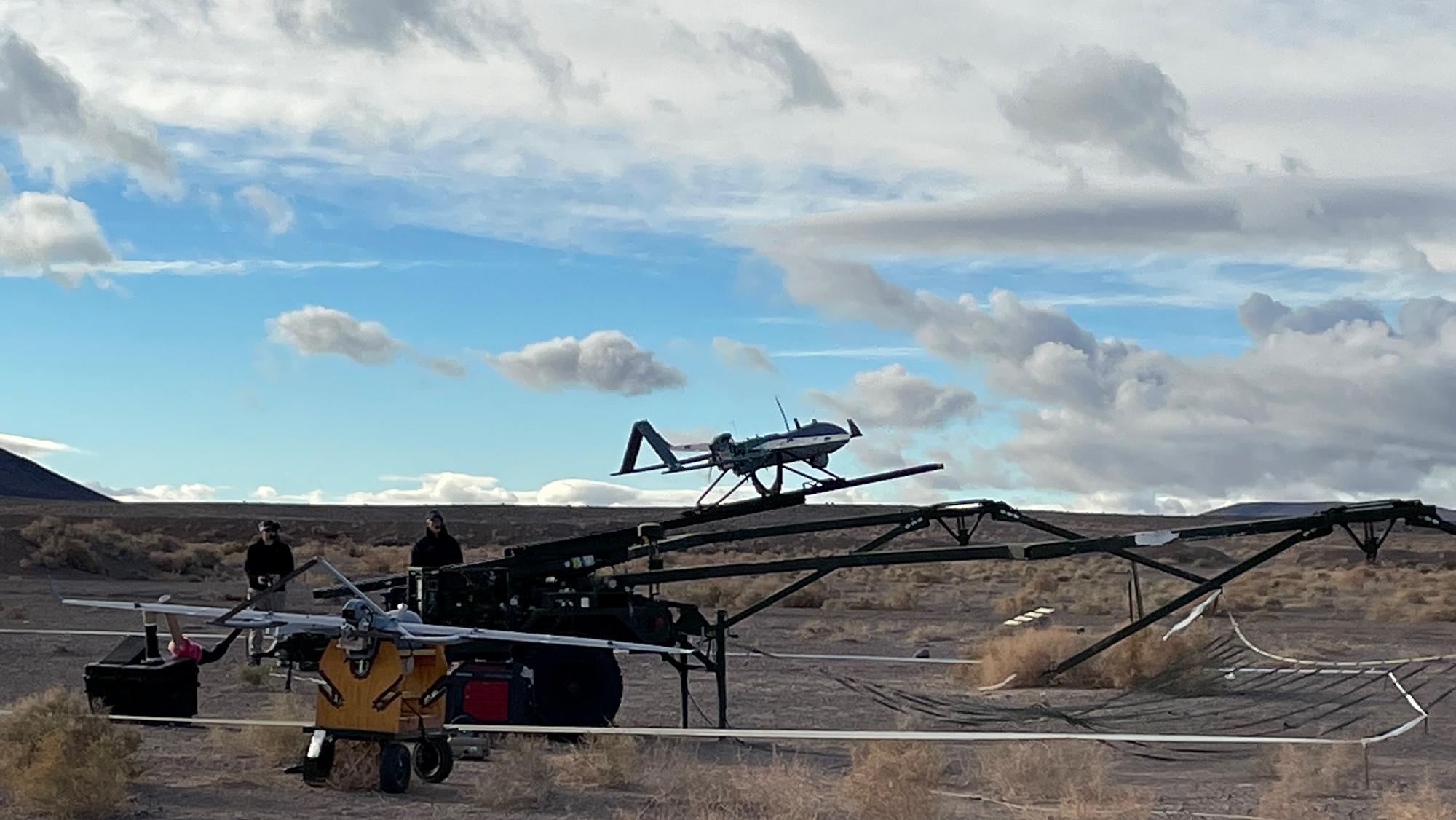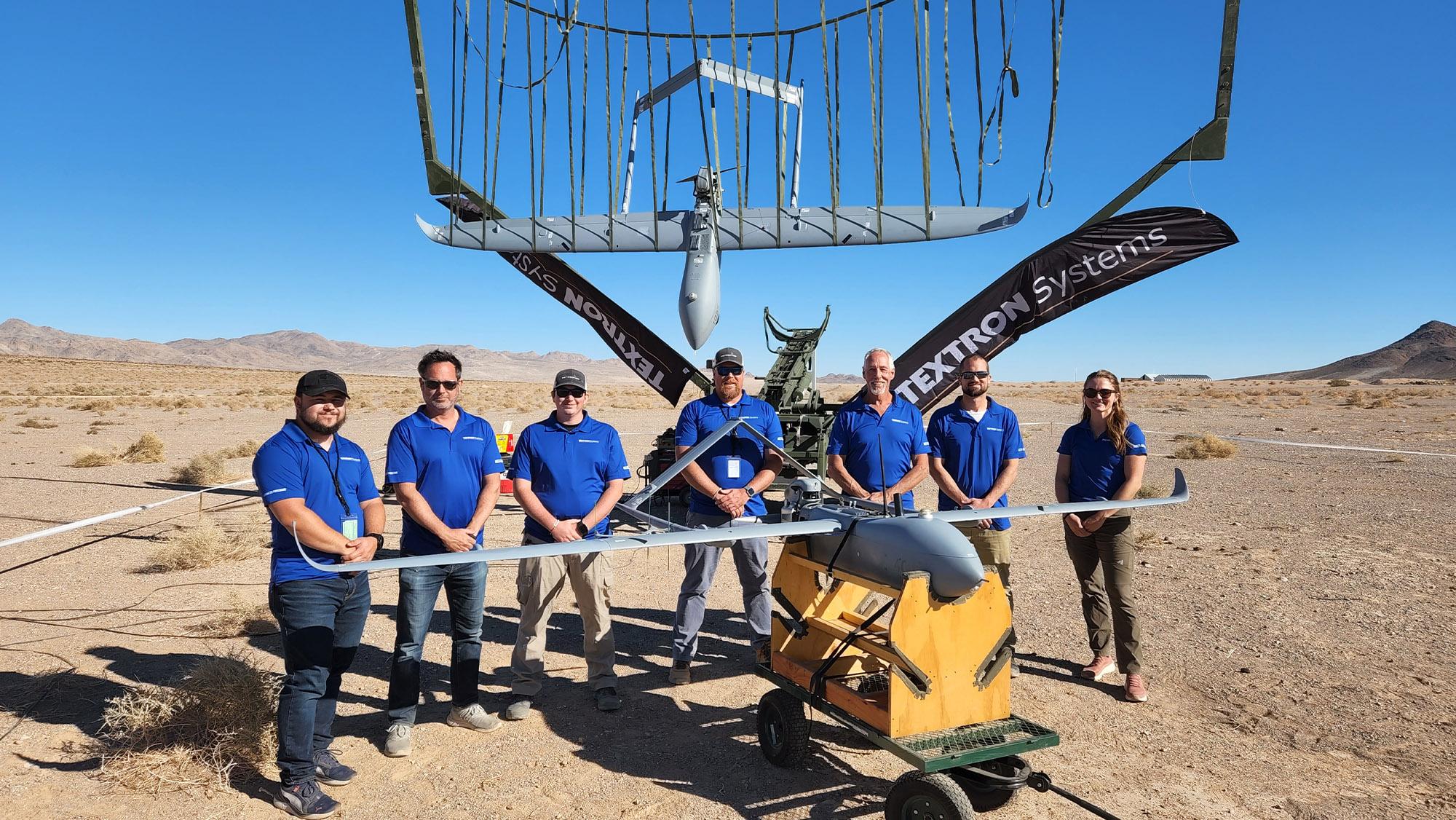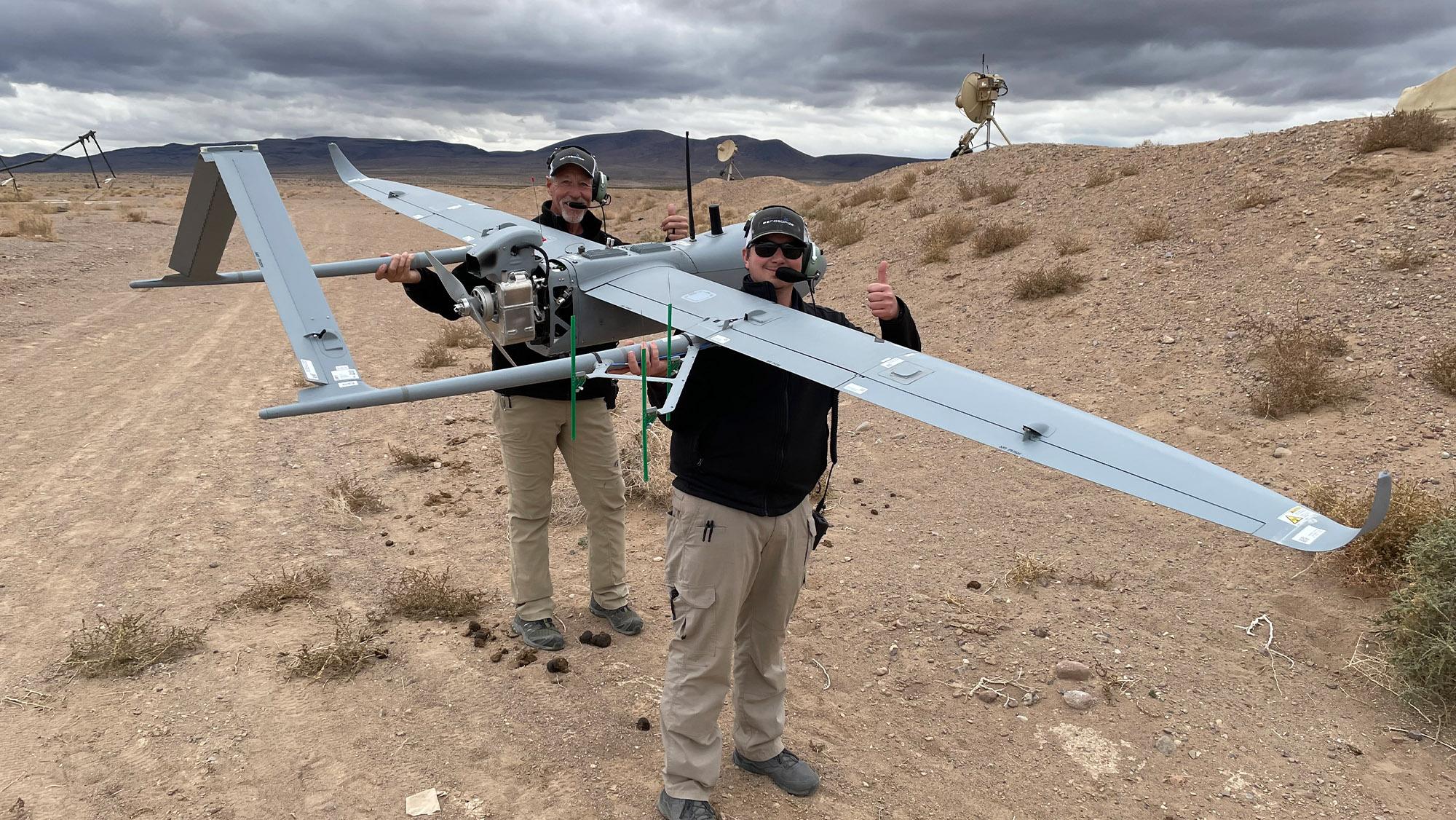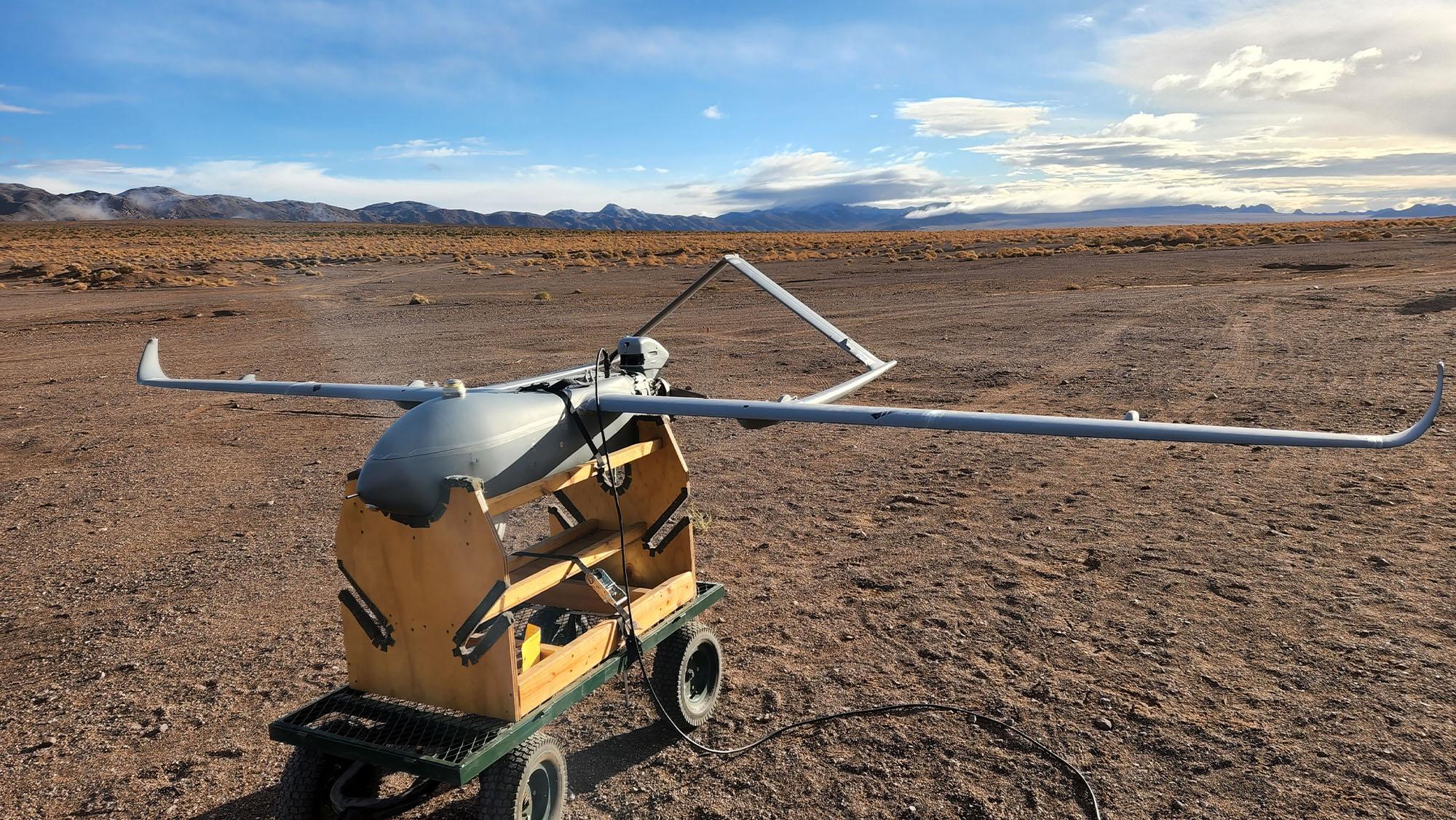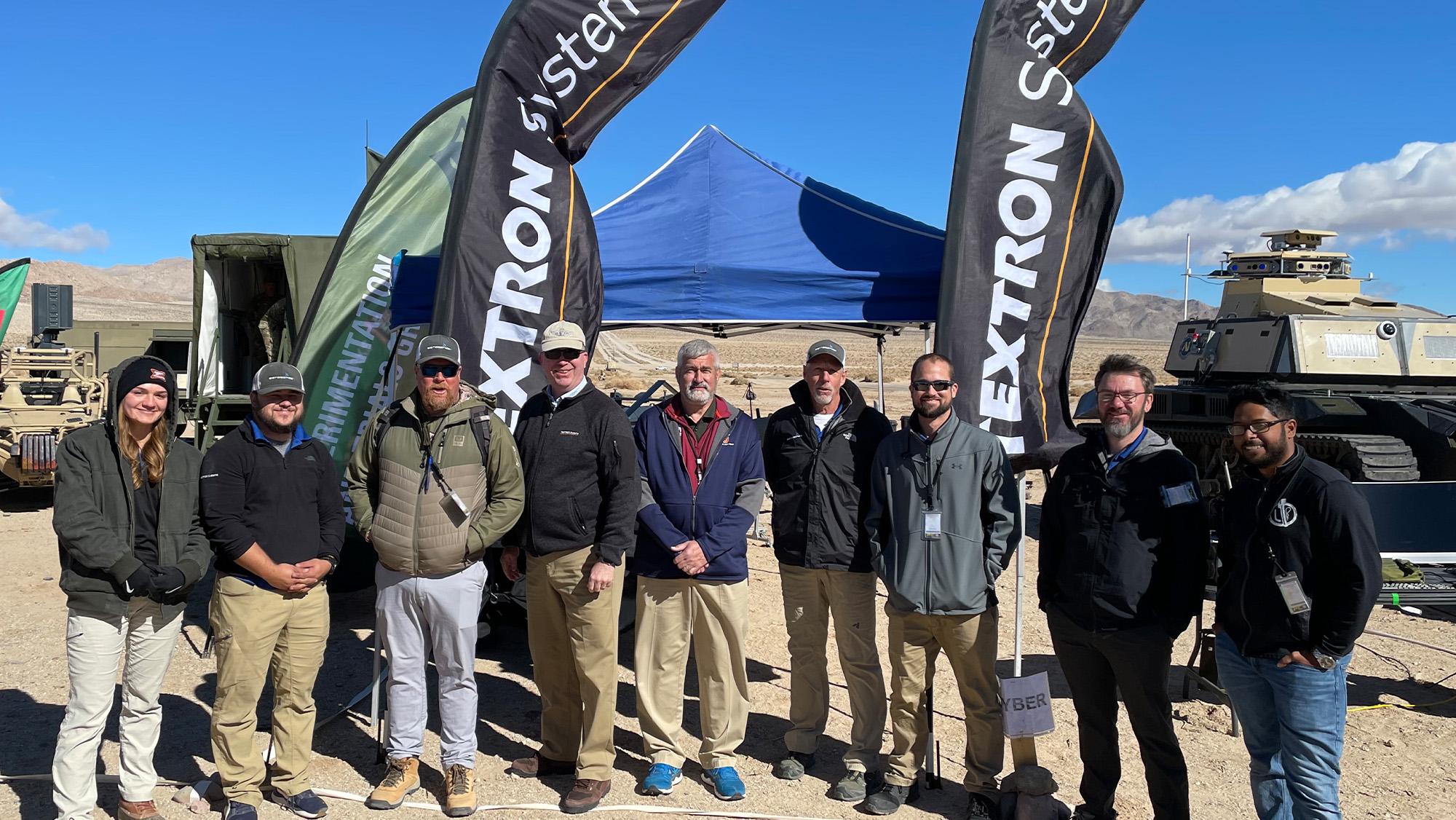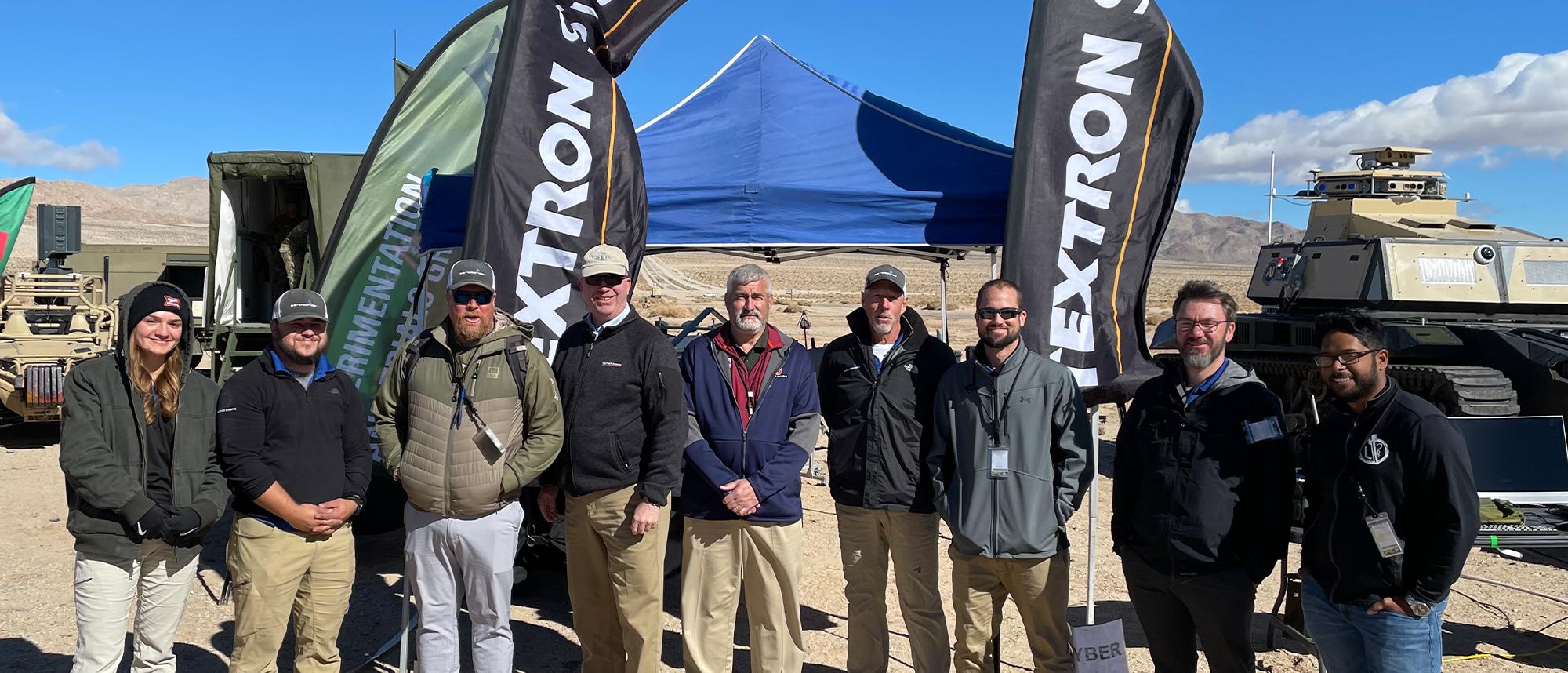
Textron Systems Supports US Army’s Project Convergence 2022 with 5 Unmanned Vehicles
Last week, Textron Systems successfully supported the U.S. Army’s Project Convergence 2022 (PC22), a multiyear operational experimentation effort focused on bringing Artificial Intelligence (AI) and Machine Learning (ML) to the battlefield. Textron Systems demonstrated cross domain capabilities, utilizing the Aerosonde® UAS as well as three ground vehicles, a RIPSAW® M5, and two RS2 vehicles.
Our Textron Systems team showcased advanced unmanned teaming with two of our Aerosonde® Unmanned Aircraft Systems (UAS), simultaneously demonstrating three different mission capabilities: rapid electronic warfare (EW), cyberspace operations and ISR within a GPS contested environment. One Aerosonde found the target and put active EW effects on radio frequency (RF) emitters, then successfully cross cued utilizing a mesh radio network to a Trillium HD-80 FMV payload on a second Aerosonde UAS, all without needing to rely on GPS.
During PC22, we proved that small-to-medium UAS can provide the kind of communications, EW capabilities and battlespace connectivity that have, traditionally, only been performed by Group 4 unmanned aircraft. This confirmed organic capability can be given to commanders using Group 2 and 3 systems at the tactical edge, which translates into faster decision-making ability, better situational awareness and access to critical information that may have otherwise been missed.
The Aerosonde UAS features a modular mission system, allowing us to deploy modular capabilities across platforms for shared awareness and collaborative behaviors. This architecture and its demonstrated capabilities inform our FTUAS product solution, the Aerosonde Mk. 4.8 HQ, and support the government’s goals for Modular Open System Architecture (MOSA) use cases through rapid capability deployment and sustainability.
In addition, there were three Textron Systems Robotic Combat Vehicles (RCVs) that demonstrated the ability to identify, classify and geo-locate entities, obstacles and potential threats. The team at Carnegie Mellon University’s National Robotics Engineering Center (CMU NREC), in partnership with the U.S. Army’s Artificial Intelligence Integration Center (AI2C) successfully demonstrated the Textron Systems’ RCVs integrated with the Aided Threat Recognition from Mobile Cooperative and Autonomous Sensors (ATR-MCAS) system. Aided Threat Recognition is a capability that allows sensors and computers to be the eyes of the battlefield, recognize threats, analyze the area and identify the best asset for the terrain to accomplish a mission. Our proven RIPSAW® M5 and RS2 militarily representative Tactical Robotic Combat vehicles were easily integrated with the NREC payloads into a capable and safety proven system.
Earlier this year, Textron Systems also successfully supported the U.S. Army at Cyber Quest and at the Experimental Demonstration Gateway Exercise (Edge 22). Textron Systems will continue developing multi-domain products and solutions to ensure our soldiers remain well-equipped across all terrains and battlespaces.
